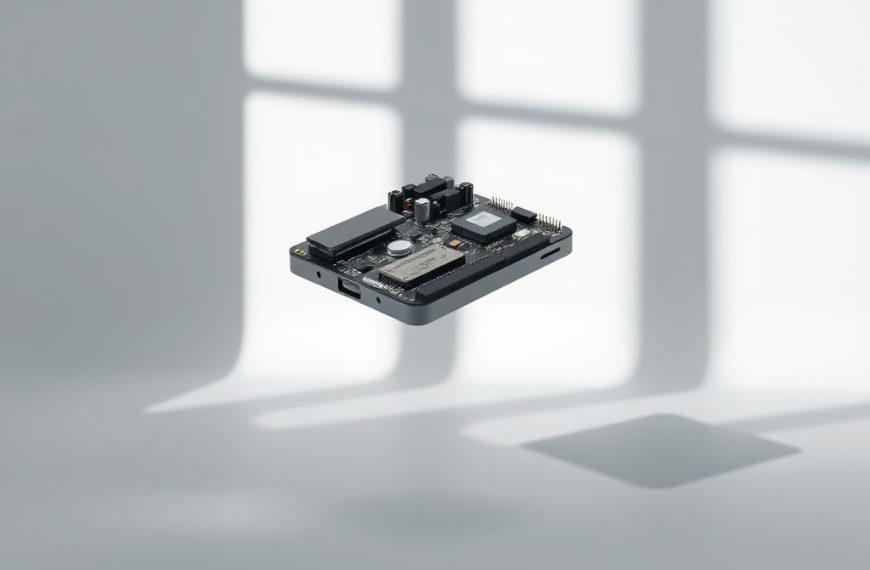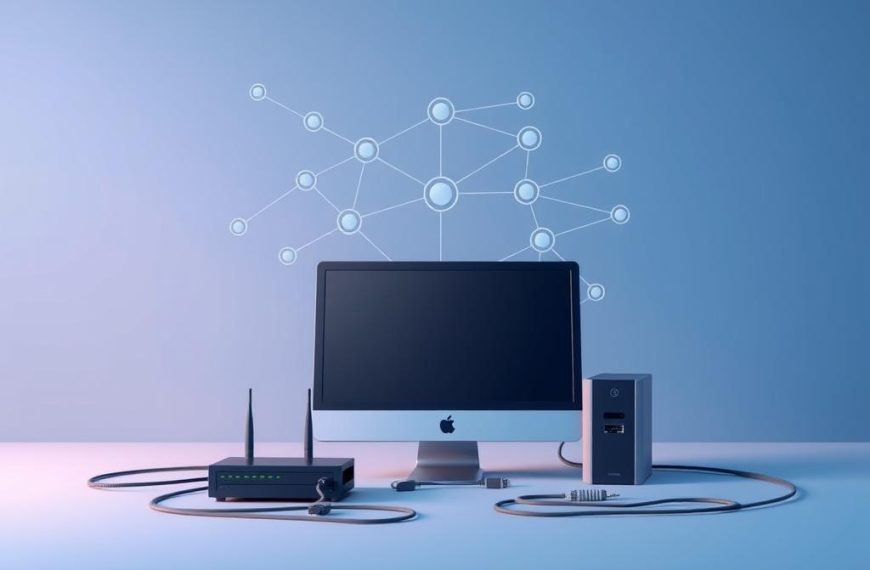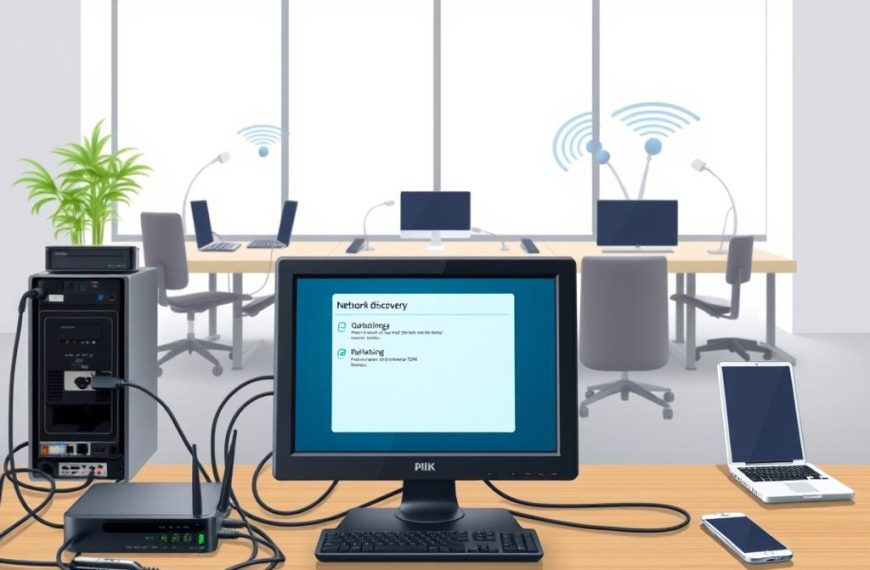6G technology is the next big leap in wireless communications. It’s set to change how we connect and use technology. Experts predict it will launch commercially by 2030, with exciting progress already happening.
The next-gen networks will offer unmatched speeds and abilities. 6G aims to deliver peak speeds of 1 Tbps. Its latency will be at microsecond level, 1,000 times faster than 5G.
6G tech goes beyond just better connections. It could support up to 10 million devices per square kilometre. This creates a vast network of interconnected tech.
We’re on the edge of a tech revolution. 6G will blur the line between physical and digital worlds. It opens up possibilities we can barely imagine now.
Understanding the Evolution of Wireless Technologies
Wireless communication has transformed remarkably since its inception. It has evolved from basic voice transmission to lightning-fast data networks. This evolution has reshaped how we connect and communicate.
Cellular technology has dramatically changed our digital landscape over four decades. Mobile network generations have revolutionised communication technologies. Let’s explore this incredible journey.
The Journey from 1G to 5G
Each mobile network generation has brought unprecedented capabilities:
- 1G (1979): First-generation technology with basic voice transmission
- Download speeds: 2.4 kbps
- Analogue voice calls only
- 2G (1991): Digital networks enabling text messaging
- Average download speeds: 0.2 Mbps
- Introduction of SMS capabilities
- 3G (2001): Mobile internet emerges
- Data transfer speeds up to 2 Mbps
- First smartphone capabilities
- 4G (2009): High-speed mobile broadband
- Minimum speeds of 12.5 Mbps
- Video streaming became practical
- 5G (2019): Ultra-fast, low-latency networks
- Download speeds up to 169.46 Mbps
- Support for massive IoT ecosystems
The Need for Next-Generation Networks
Our digital demands grow exponentially. Each wireless generation responds by providing faster speeds and lower latency. It also offers greater connectivity to meet our sophisticated communication needs.
Current Limitations of 5G Technology
5G faces challenges despite its impressive capabilities. These include limited geographical coverage and high infrastructure costs. Signal interference is another potential issue.
These constraints set the stage for the next breakthrough: 6G technology. This upcoming generation promises to overcome current limitations.
What Comes After 5G Technology: Introducing 6G

A remarkable transformation is coming to wireless technology with 6G, the next-generation network. It promises to revolutionise connectivity beyond 5G. As 5G adoption grows, researchers are exploring 6G’s incredible potential.
6G offers a quantum leap in future connectivity. It will reshape our digital experience with unprecedented capabilities.
Key innovations include:
- Network speeds up to 100 times faster than 5G
- Support for 10 million devices per square kilometre
- Ultra-low latency for real-time applications
- Advanced terahertz wave spectrum utilisation
Technological pioneers are making significant strides in 6G development. Samsung has tested 6G at speeds 50 times faster than 5G. Japan and South Korea are investing heavily in research.
The University of Sheffield will open the UK’s first national 6G research facility. This highlights the global momentum behind this transformative technology.
Commercial 6G networks are expected around 2030. They will unlock extraordinary potential across multiple sectors. 6G will enable seamless autonomous vehicle communication and support advanced telemedicine.
It will also enhance smart city infrastructure. This represents a paradigm shift in how we connect and interact with technology.
6G is not just an incremental upgrade—it’s a technological revolution that will redefine our understanding of wireless communication.
The Technical Foundation of 6G Networks
6G, the next wireless tech generation, promises to revolutionise connectivity with groundbreaking innovations. It’s set to create a transformative wireless ecosystem, powered by cutting-edge advancements in spectrum efficiency and radio technology.
This new network infrastructure will usher in an unprecedented leap in wireless communication. It will rely on several key strategic approaches for its technological foundations.
The technological foundations will leverage several key strategic approaches:
- Utilisation of terahertz frequencies beyond 10 GHz
- Enhanced spectrum management techniques
- Ultra-high-speed data transmission capabilities
- Microscopic latency improvements
Higher Frequency Spectrum Usage
6G networks will use frequency bands above 10 GHz, reaching up to 1 THz. This expansion allows for unprecedented data speeds, potentially delivering up to 1 terabit per second.
Researchers at University College London have shown transmission speeds of 938 gigabits per second in lab tests. This showcases the immense potential of these advanced radio technology approaches.
Advanced Network Architecture
6G’s network architecture will go beyond traditional communication models. It will use intelligent spectrum allocation to transmit and receive signals across multiple frequencies simultaneously.
This breakthrough will greatly improve spectrum efficiency. It will create a more dynamic and responsive wireless ecosystem.
Integration with Artificial Intelligence
AI will be woven into 6G’s network fabric. Machine learning algorithms will optimise network performance and predict user needs with great precision.
This intelligent approach will enable collaborative robots and digital twins to operate almost instantly. It will also support advanced industrial automation systems with near-instantaneous responsiveness.
Revolutionary Features of 6G Technology
6G capabilities will transform wireless innovations. This technology promises terabit-per-second networks, revolutionising digital interactions. Imagine downloading high-definition films in milliseconds with near-zero latency.
6G will push beyond current tech limits. Networks will support billions of interconnected devices in smart cities and healthcare. Artificial intelligence will allow networks to adapt and optimise performance in real-time.
Virtual and augmented reality will reach new heights with 6G. Telemedicine will enable remote surgeries with instant data exchange. Sub-terahertz frequencies will boost bandwidth, supporting more connected devices.
6G will provide universal internet access in remote areas. The technology aims for energy efficiency through advanced network architectures. It will sense and interact with environments, adapting to human needs precisely.








